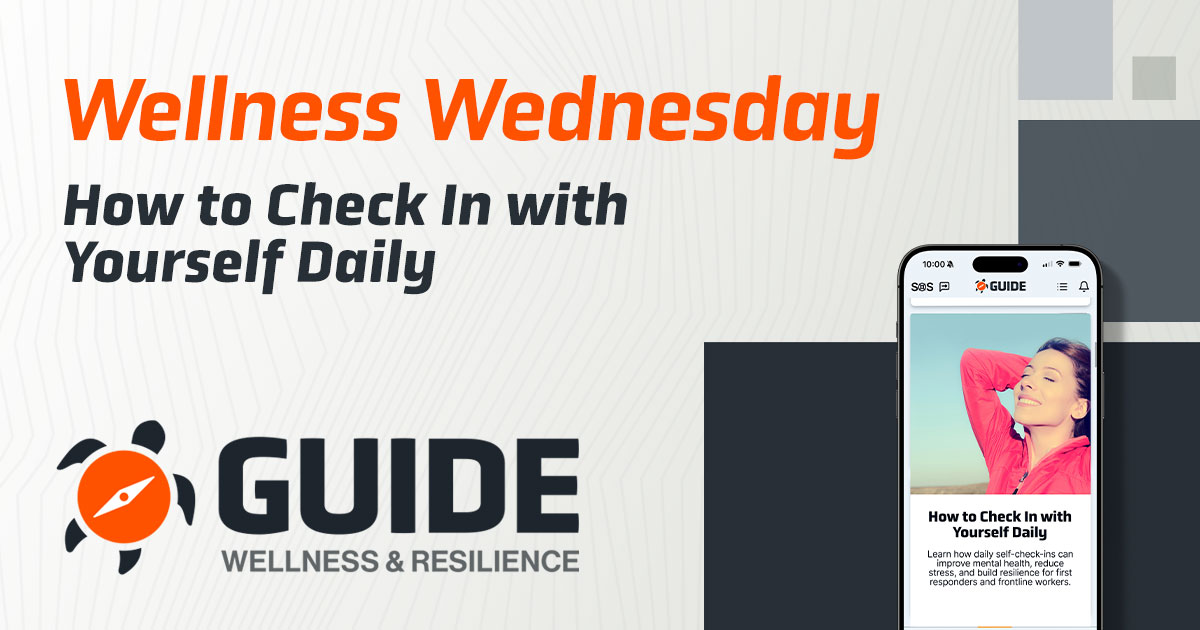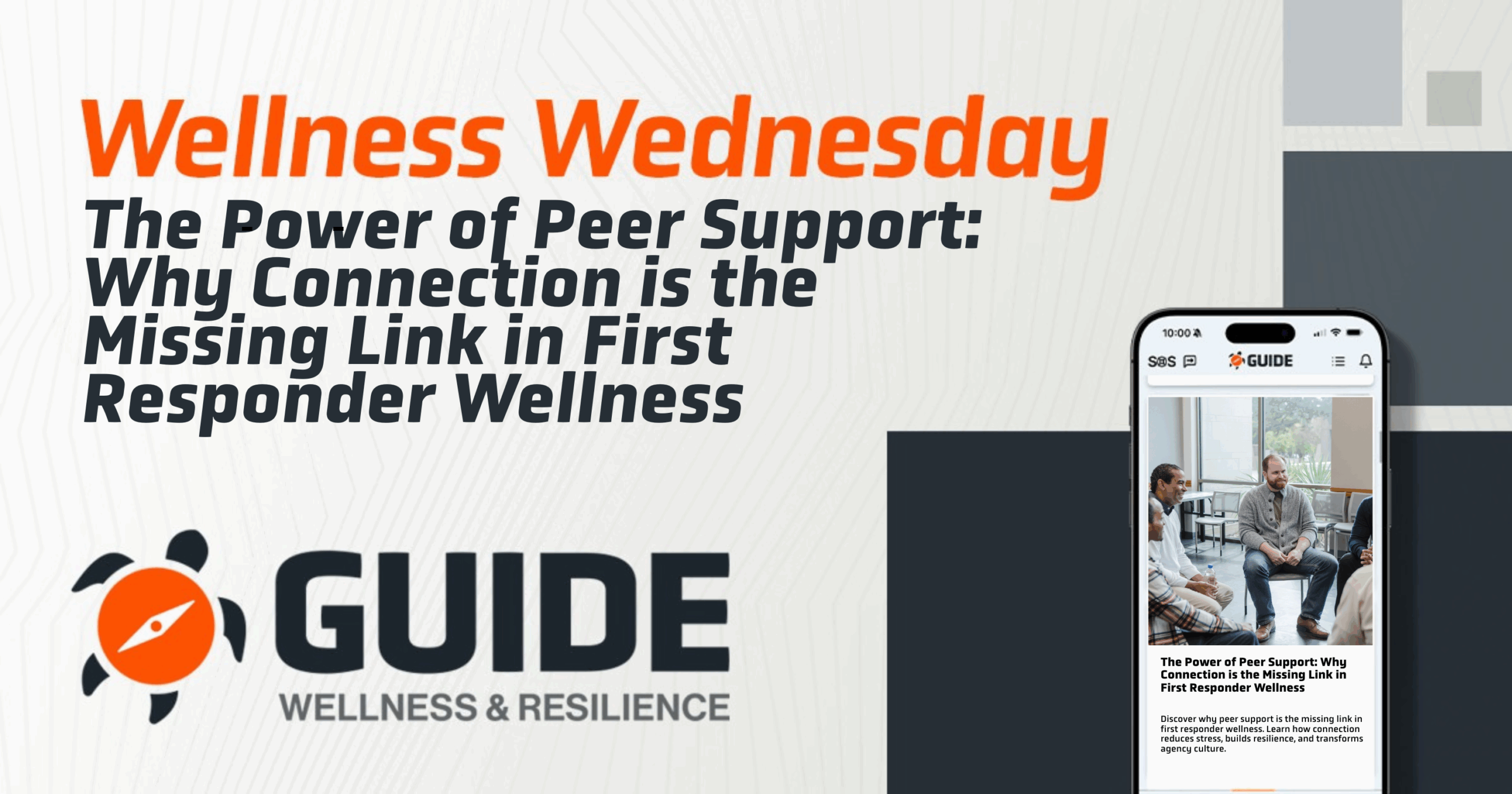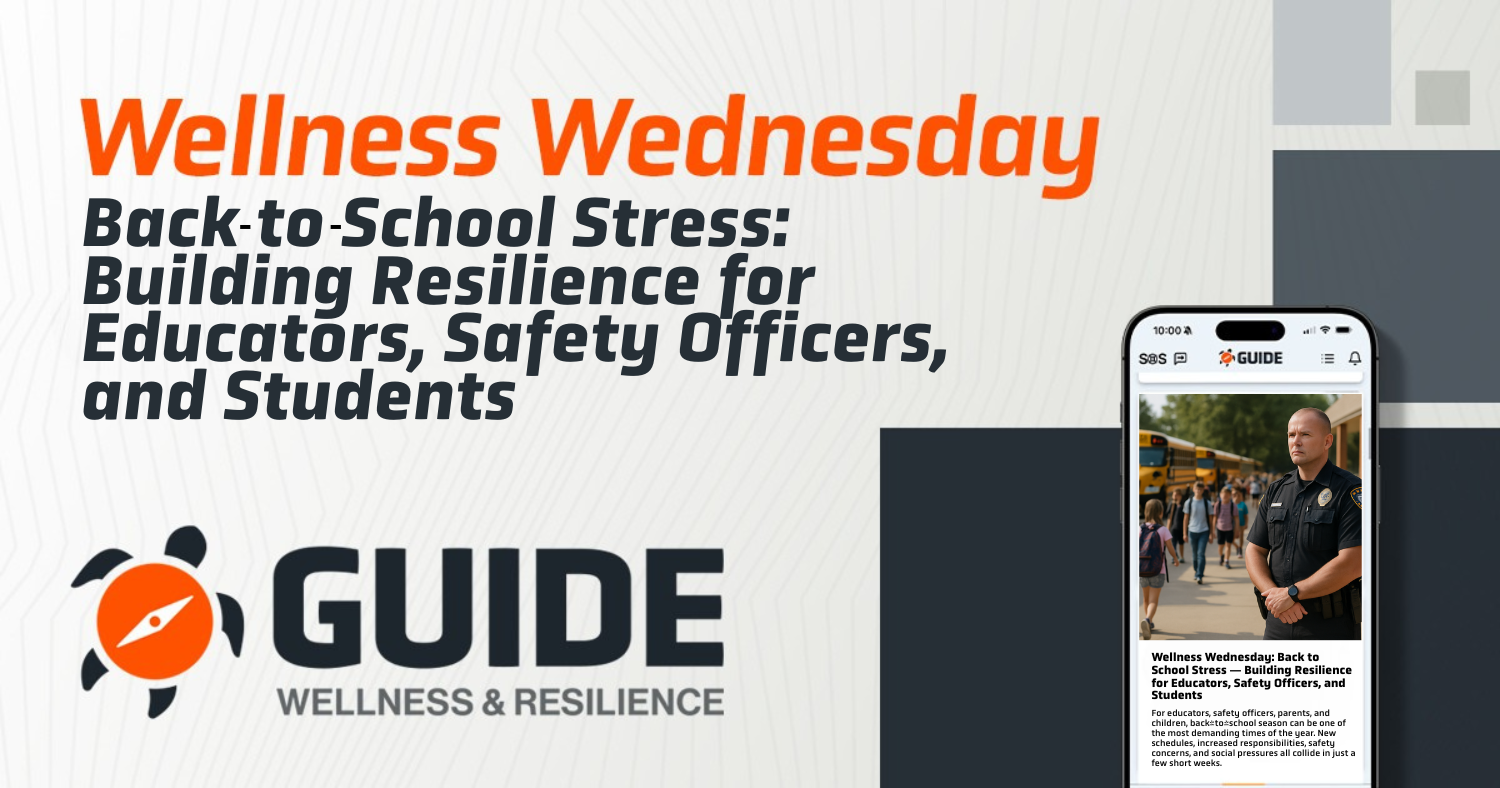Let’s be real—life moves fast. Between back-to-back calls, long shifts, and all the pressure that comes with serving others, it’s easy to lose track of how you are doing. You push through because that’s what the job demands. But sometimes, pushing through turns into running on empty.
That’s why it’s so important to make one simple habit part of your daily routine: checking in with yourself.
Just like you inspect your gear or prep your vehicle, your mental and emotional well-being needs a daily look, too. And it only takes a few minutes.
This week’s Wellness Wednesday is all about how to check in with yourself in a way that’s simple, honest, and helpful—especially for first responders and everyday warriors.
What Does “Checking In” Mean?
A self-check-in is a quick, intentional pause to see how you’re doing—mentally, emotionally, and physically.
It’s asking questions like:
- How do I feel right now?
- What’s going on in my mind?
- What do I need today to feel steady and strong?
It’s not about fixing everything. It’s about creating space to notice what’s really going on—so you can take care of it before it builds up.
Why It Matters—Especially for First Responders
You’ve got a job that doesn’t slow down. And while you’re trained to check in on everyone else, it’s just as important to check in with yourself.
Daily self-check-ins help you: ✅ Catch stress before it becomes burnout
✅ Stay aware of emotional overload
✅ Handle tough calls with more clarity
✅ Communicate more honestly with your team and family
✅ Build emotional strength over time
Ignoring stress doesn’t make it go away. But noticing it gives you the power to manage it in a healthy way.
What a Daily Check-In Looks Like
You don’t need a journal, a therapist, or 30 minutes of quiet to check in. You just need a willingness to pause and ask yourself a few simple questions.
Here’s how you can do it in 3–5 minutes, either before your shift, after a call, or before bed.
Step 1: Pause and Breathe
First, take a deep breath. Then ask:
- How am I feeling right now?
(Tired, focused, irritated, anxious, calm, numb?) - What thoughts are bouncing around in my head?
- Am I holding any tension in my body? Where?
You don’t have to analyze it—just notice it. This step helps you reconnect with yourself in the moment.
Step 2: Name It to Tame It
When you name your emotions, you take away some of their power. Ask:
- What emotion is most present right now?
(Frustration, sadness, pressure, gratitude?) - What’s one word to describe how today’s going so far?
Labeling feelings helps your brain process them more clearly. You might realize you’re more stressed—or calmer—than you thought.
Step 3: Ask Yourself What You Need
Now ask:
- What do I need today to take care of myself?
(Rest? Movement? Connection? Quiet? A moment to laugh?) - Is there anything I’ve been avoiding that I need to face?
This step turns awareness into action—so you can respond to your needs before they turn into problems.
Step 4: Close With Compassion
Finally, end with a kind word to yourself. Try:
- “I’m doing the best I can right now.”
- “I made it through today. That matters.”
- “It’s okay to feel what I feel.”
This step might feel weird at first—but it builds self-respect and resilience. And it sets the tone for how you’ll handle the rest of your day.
Daily Check-In Tools That Make It Easier
If you’re not used to checking in with yourself, it might feel awkward at first. Here are a few tools to help:
✅ Use a 3-question note on your phone:
Create a daily checklist with prompts like:
- What am I feeling?
- What’s weighing on me?
- What do I need today?
✅ Use the traffic light system:
Ask yourself:
🟢 Green – Am I feeling good, balanced, and ready?
🟡 Yellow – Am I okay but carrying some stress or tension?
🔴 Red – Am I overwhelmed, disconnected, or burned out?
This helps you quickly scan your emotional state and adjust.
✅ Try a daily body scan:
Mentally check in with each part of your body from head to toe. Notice any soreness, stress, or fatigue—and take one step to address it.
When to Check In with Yourself
You don’t have to schedule a deep dive every day. But choosing key moments to pause can make a big difference:
- Before your shift begins
- Right after a tough call or situation
- Mid-shift reset break (even 2 minutes counts)
- After you get home
- Before bed
Even one 60-second check-in a day can help you stay aware, grounded, and strong.
How Self-Check-Ins Help Long-Term Mental Health
Checking in doesn’t just help you today—it helps you build emotional strength for the long haul. Here’s how:
- You notice patterns – You’ll start to recognize what drains you and what helps you feel better.
- You respond instead of react – When you’re aware of your emotions, you can manage them more clearly.
- You avoid emotional overload – Letting feelings pile up often leads to burnout. Daily check-ins help you release stress in small doses.
- You become a better teammate, leader, and partner – Emotional awareness makes every relationship stronger—including the one you have with yourself.
You Deserve to Be Heard—Even by Yourself
You listen to people all day. Victims. Coworkers. Family. Callers. But who’s listening to you?
That’s what a daily check-in does. It creates a moment where you hear yourself—where your needs matter too.
You don’t have to be perfect, or have all the answers. You just have to pause long enough to ask:
“How am I doing, really?”
Because you matter. Your well-being matters. And taking a few minutes each day to check in isn’t selfish—it’s smart, it’s strong, and it’s necessary.
You don’t have to wait until you’re overwhelmed to pay attention to how you’re doing. A few mindful minutes a day can help you stay grounded, focused, and emotionally well—especially in a world that asks a lot from you.
So tomorrow, or even right now, take a deep breath and check in.
You’ll be surprised what you learn when you stop and listen.




